Camera Evolution
I believe I speak on behalf of all individuals who possess a cell phone equipped with a built-in camera – I am always equipped to capture a photo or video, even if it may not meet my desired quality. While it might sound boastful, the distinction between phone-captured images on this site and those from a DSLR camera is evident. That’s likely because when I use my phone, it’s because I’m taking advantage of an unexpected situation, whereas when I’m using a DSLR, it’s an intentional event. With that being said, allow me to guide you through the range of cameras I have utilized throughout the years.
This is the camera that started me on the path of photography at 8 years old – the Box Brownie that as best I remember used 127 B/W roll film. It was produced by Eastman Kodak. I don’t know the date of the one I had, especially as the Internet tells me the original Brownie used 117 film (a larger format).
My father had purchased a retail store named “Frosts” for his TV and appliance business. Mr. Frost was an older, white haired gentleman, and part of the agreement of sale was that the shop keep his name. It also came with an eclectic inventory including musical instruments – my first guitar came from there and I believe this camera did too as my father was trying to eliminate the old inventory.
At the age of 8, I had no money. Using the camera as a tool to motivate me to accomplish tasks eventually hindered my interest in photography due to the limited opportunities to take pictures.
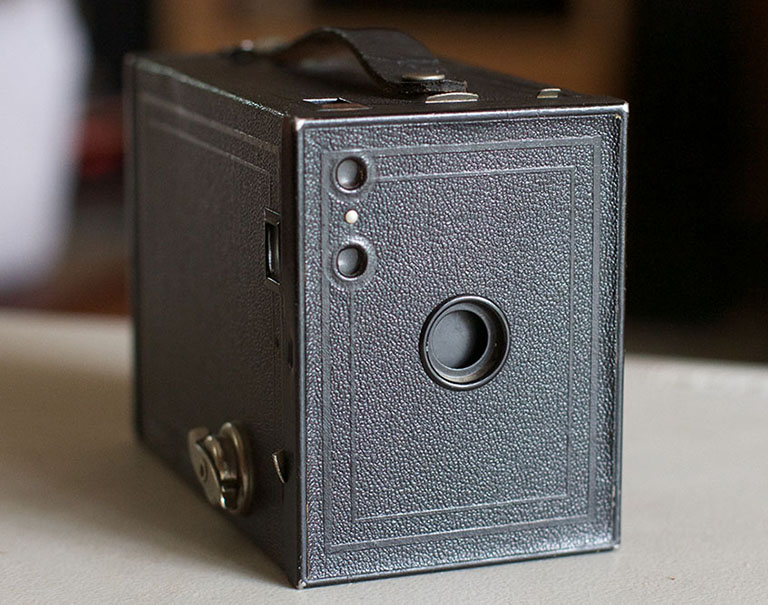
At age 18, having a job and somewhat limited income I purchased a 35mm SLR film camera, – the Zenit-E.
Released in 1967 by KMZ (Krasnogorskiy Mechanicheskiy Zavod) in the Soviet Union.
Following the post WWII breakup of Germany, the Soviet Union acquired Zeiss Jenna and one of the Leica facilities located in the Eastern zone. So it is not surprising that the Helios lens that came standard on the E was Zeiss quality and the shutter mechanism based on the Leica.
As an aside, this camera can be seen in the 1984 movie “Red Dawn”.
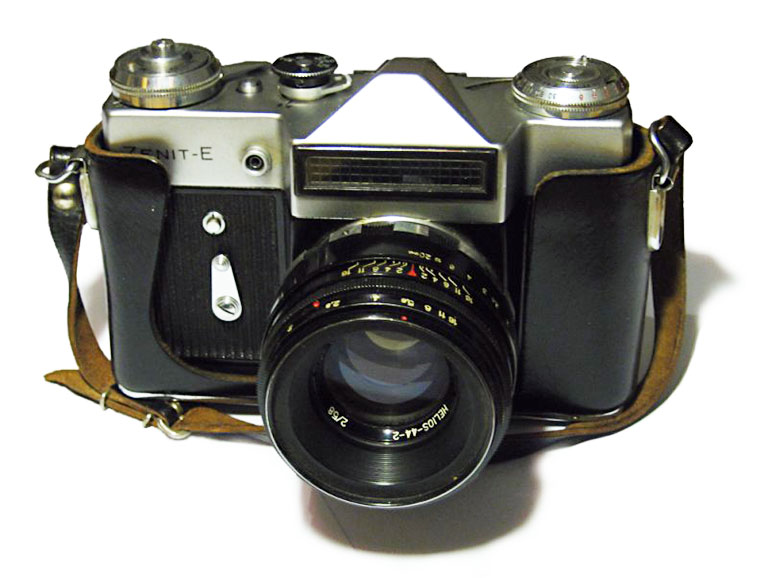
I was still in Rochester, MN in the early 70’s, and visiting a camera store at the new Apache Mall. I had found the Zenit to be limiting as I only had the one lens. I looked at several brands of camera, and it was a three way decision between Canon, Nikon and Pentax. My good friend at the time, Ellis Jones, favored Pentax, but I sort of fell in love with the Canon, possibly influenced by their reputation for the best lenses.
I knew it was a critical decision because the investment in lenses can easily exceed the cost of the camera body alone, and I think that for film cameras, none of the three under consideration would have been a bad choice.
While still in Minnesota, I started playing around with different types of film such as Infrared, Ultra Violet and ASA 10 (ISO 10) Kodak Microphotography – all slide films – and this started me on an interesting path of processing my own slide film.
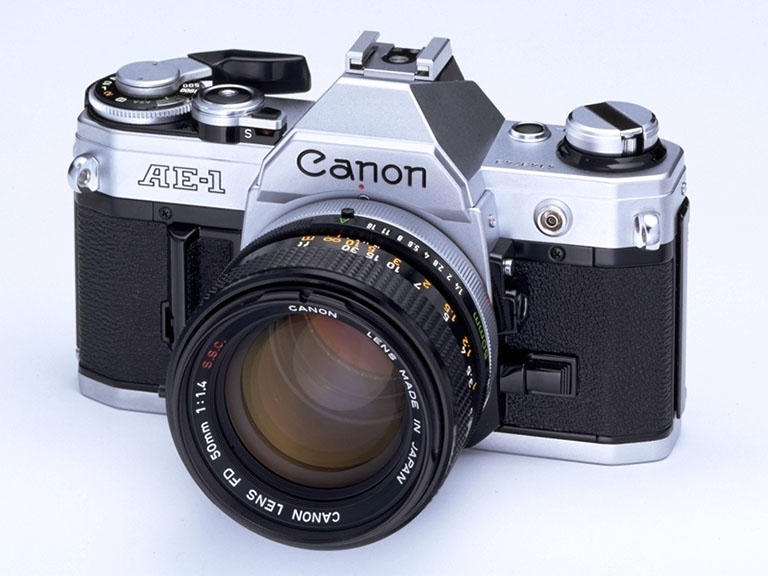
After the move to Virginia, I was finding limitations with the AE-1 and upgraded to an A-1. I was still shooting primarily slide film which has limitations – not just the wife complaining about trace levels of glue on the iron and ironing board from mounting the cut film into cardboard frames. Plastic snap frames solved that. A friend gave me a Kodak Ektaflex processor – essentially a set of rollers and an activator tank that would develop the positive process Ektaflex paper. One of the bathrooms would temporarily transform to a darkroom with enlarger and I was able to print my slide photos.
Polaroid determined that the Ektaflex process infringed on their patents and the courts agreed – and Kodak ceased the product. I started to use regular negative film and print services again.
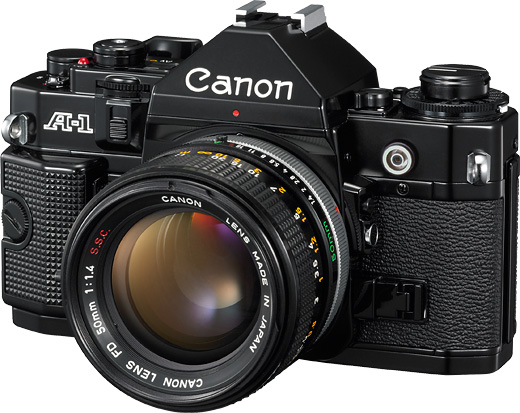
Horror of horrors. One day, I had taken a small camera bag out to the car but had left my keys indoors. I set the bag on the ground intending to put it in the trunk. Going back indoors I was distracted into doing something else and when I eventually left, I got in the car and backed over my camera bag. The A-1 was history.
The T-90 was the last film camera I owned, and it came down to St Croix with me along with a nice collection of lenses, and as explained on the home page, I drifted away from photography and eventually gave the camera and lenses to a professional photographer friend.
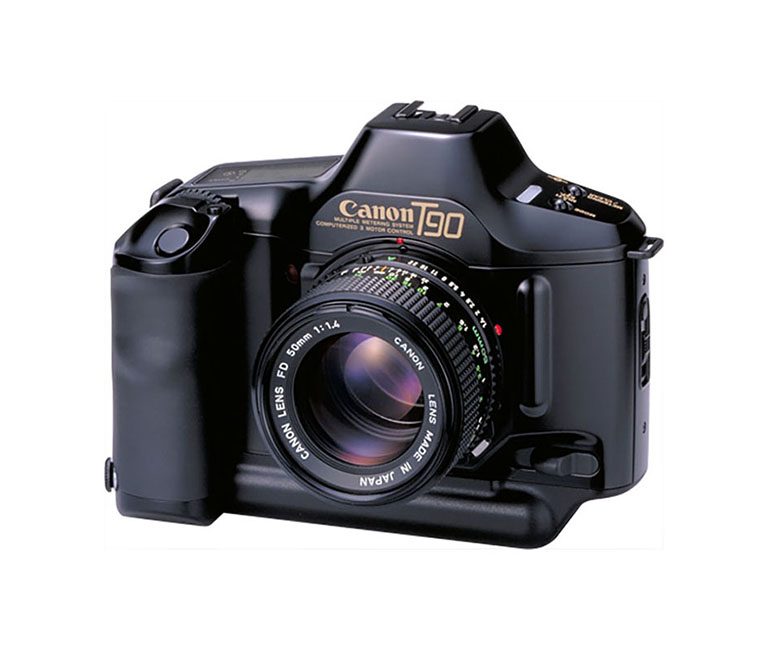
My first foray into the world of digital photography was with a Kodak LS753 5.0MP. I don’t clearly remember this camera, and it is likely that I borrowed it, but in looking through the EXIF data of old photos from 2004, it is clear that many of my photos were taken using this camera.

Whatever happened to the Kodak, I don’t recall, but it was replaced in 2008 with a Canon Powershot. It was a great pocket camera, and I have some great images of beaches and sunsets, but it was not quite versatile enough for the mills project.
I ended up giving it away when cellphones became cameras.
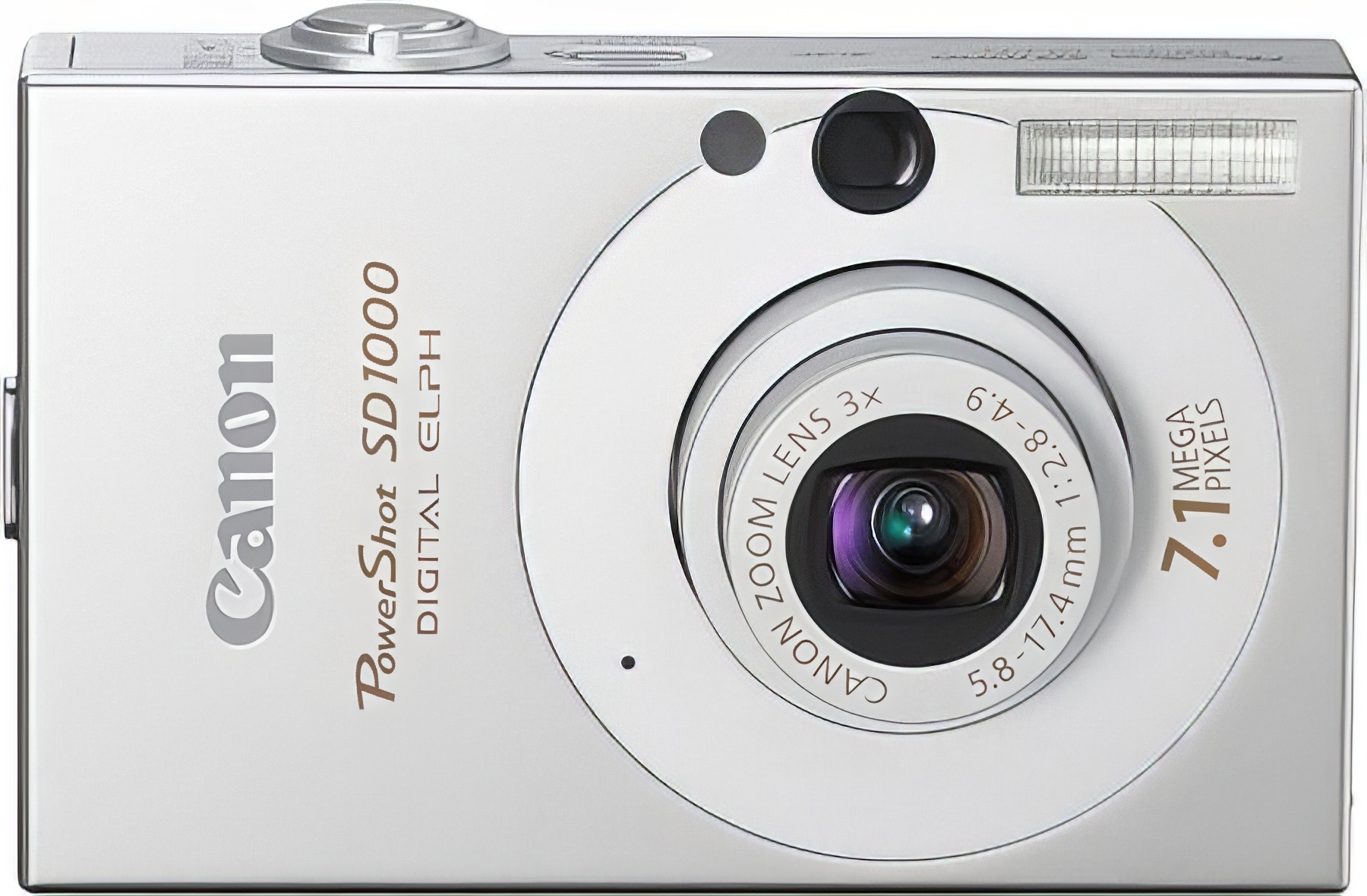
In 2009, I moved up to a Canon 450D which was marketed in the US as the EOS Rebel XSi and in Japan as the EOS Kiss X2. It is a great digital camera in spite of being just 12M pixels – I have owned two; the one I own today is the Rebel XSi. It is with this camera that I started to build my collection of EF-S lenses.
EF-S lenses are specifically designed for use with digital cameras using APS-C sensors. Full frame sensors are equivalent to a 35mm film frame (36mm x 24mm). APS-C (Advanced Photo System type-C) is a smaller format than the full frame sensor, typically around 22mm x 15mm.
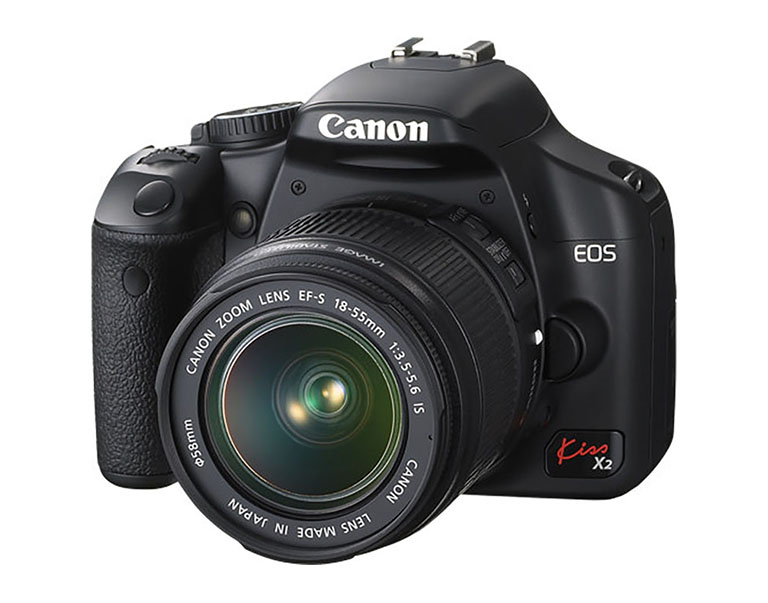
The 50D had been my workhorse for almost 15 years. We had taken a trip over to St Thomas, and visiting a camera store in Havensight, I saw a 50D “body only” for a good price, and my growing EF-S lens collection was completely compatible.
An aside: I had a Canon 10mm-22mm super-wide zoom, but one day when taking photographs of a luxury villa for their website, I backed into my tripod and the lens took the brunt of the fall, separating from its base. A superwide lens is critical for indoor real-estate photography and I replaced it with a Sigma 8mm-16mm which is an incredible lens, producing this shot of the alley alongside 69 in Frederiksted at 8mm focal length.

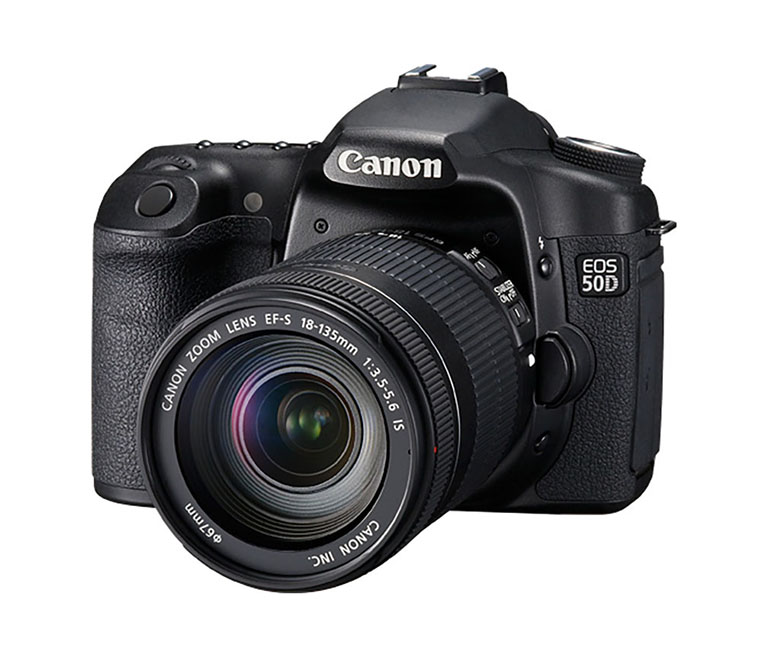
A recent addition is a 60D, which while first released in 2010, I came across one in “mint” condition when I believed that my 50D had died. I hadn’t made any progress on the heritage project post 2017 when I underwent radiation therapy in Florida and we all had to recover from hurricane Maria and get past Covid-19. Earlier this year (2023) I decided to change that and pulled out my cameras. The batteries were dead, but after recharging, the 450D powered on, but the 50D would not. Sad, but not defeated, I scoured the internet for a replacement and purchased a brand new 60D with 18mm-55mm lens. I decided to see if the 50D could be repaired and I located a company in Glendale, CA. In preparing to ship it, the camera decided that the joke was over and powered on. I took several pictures and it worked flawlessly.
The 60D uses an 18MP sensor, and has some features that I like, such as an articulating rear screen and built in remote shutter release.
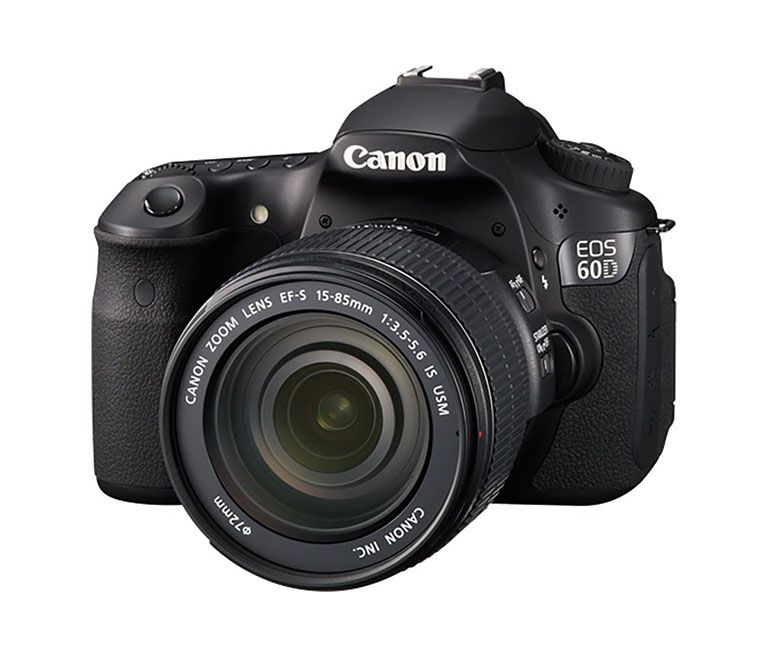
The latest addition in a Canon 80D which has displaced the 50D in the camera bag. The Canon EOS 80D was announced by Canon on February 18, 2016. It has a 24.2 MP resolution, and has a flip out screen that can be rotated up or down or all the way to the front.
You might ask, why invest in an 8 year old technology? The answer is – lenses. I have thousands of dollars invested in EF-S lenses which are not really compatible with the current mirrorless technology, and for my level of photography, I couldn’t justify the cost of replacing everything again. I instead decided that major investment should be in upgrading my MacBook Pro to the latest MacBook Pro with the Apple M4 Pro Chip (14-Core CPU and 20-Core GPU) because the latest iterations of the photo processing software I use are not compatible with the Intel based MacBooks.
For those interested, the software products I use for post processing are:
- Adobe Lightroom for general purpose editing
- Adobe Photoshop for detailed editing
- Photomatix Pro for HDR processing
- Topaz Photo AI for refining and enhancing images
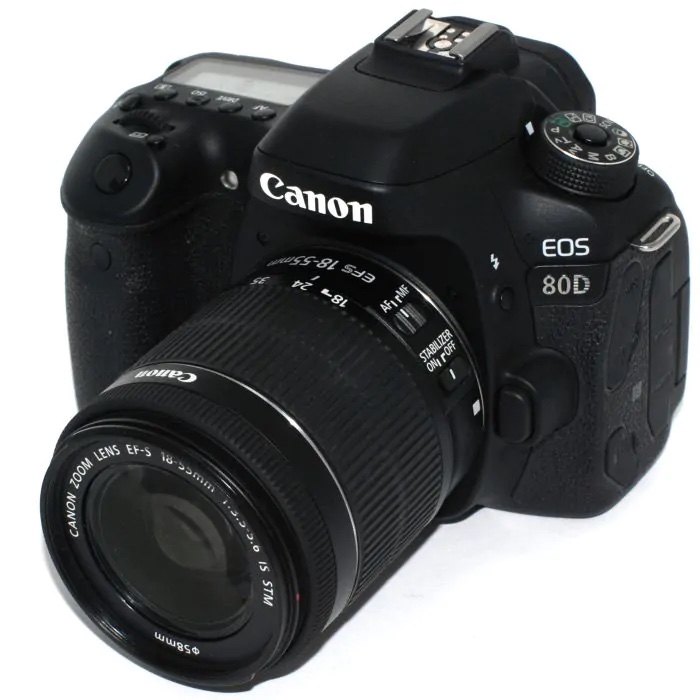
I had to question myself about including this camera as it is my primary underwater camera (the secondary being a GoPro Hero-8 with an underwater housing). This is the Olympus TG-5 and PT-058 housing which extends the underwater depth to 45 meters (147 feet).
As much as the mills project allowed me to research the heritage of St Croix on land, there is a world beneath the ocean that could also be considered heritage.

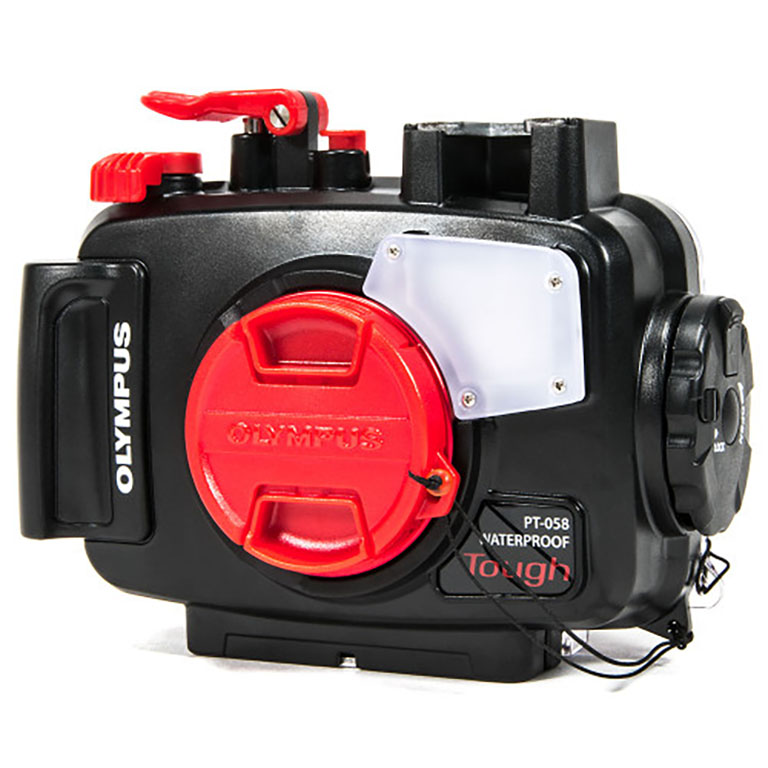
Recently, my old Tenba Slingback camera bag started to disintegrate so I’ve replaced it with a Tenba Shootout 16L backpack. It is now configured and packed with:
- Camera bodies:
- Canon EOS 80D APS-C DSLR
Canon EOS 60D APS-C DSLR
- Canon EOS 80D APS-C DSLR
- Lenses:
- Sigma EF-S 17-70mm f:2.8-4.5
Sigma EF-S 8-16mm f:4.5-5.6
Canon EF-S 55-250mm f:4-5.6
Canon EF 70-200mm f:4 L (effective 112-320mm on APS-C)
- Sigma EF-S 17-70mm f:2.8-4.5
- Misc:
- Spare batteries & cleaning supplies
Note: EF lenses are full frame whereas EF-S are specifically for the smaller APS-C format. The size ratio is 1.6:1 which explains the increase in effective focal length for the EF 70-200mm.
I keep the 50D in a small camera bag that I can put in my Jeep when I’m going somewhere that isn’t for a specific photo shoot. The camera is fitted with a Sigma EF-S 17-70mm f:2.8-4.5 lens. All my cameras are fitted with the Manfrotto quick release plate, and the Manfrotto tripod lives in the Jeep. This gives me the ability to capture quality photos, even when unplanned.
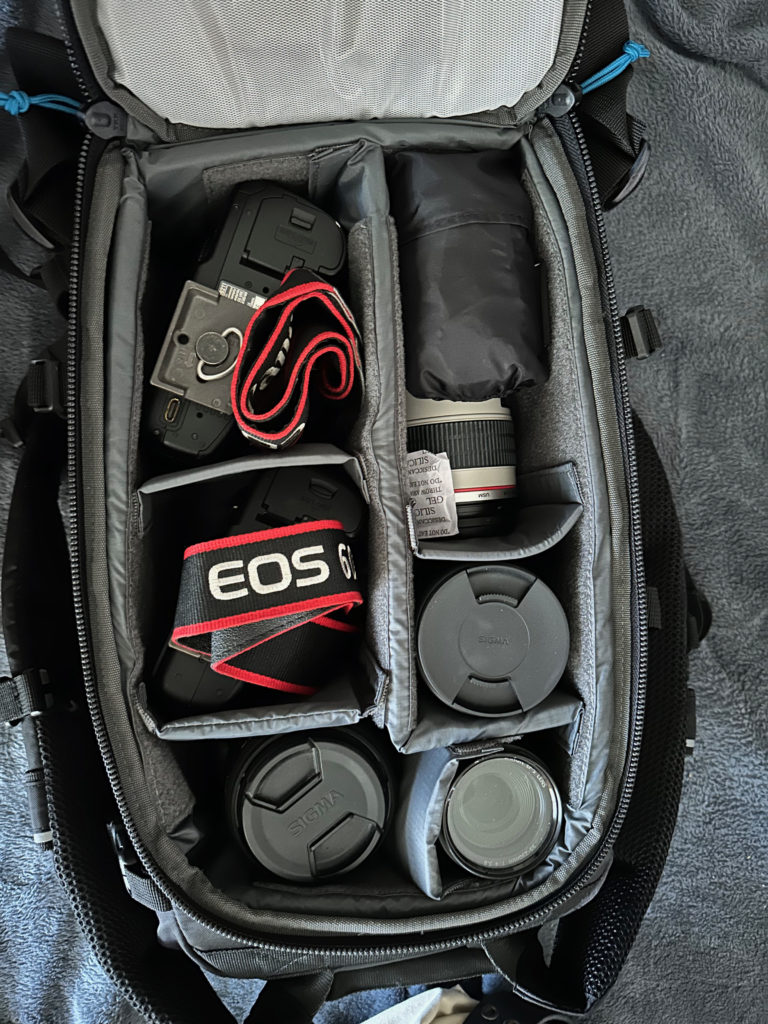
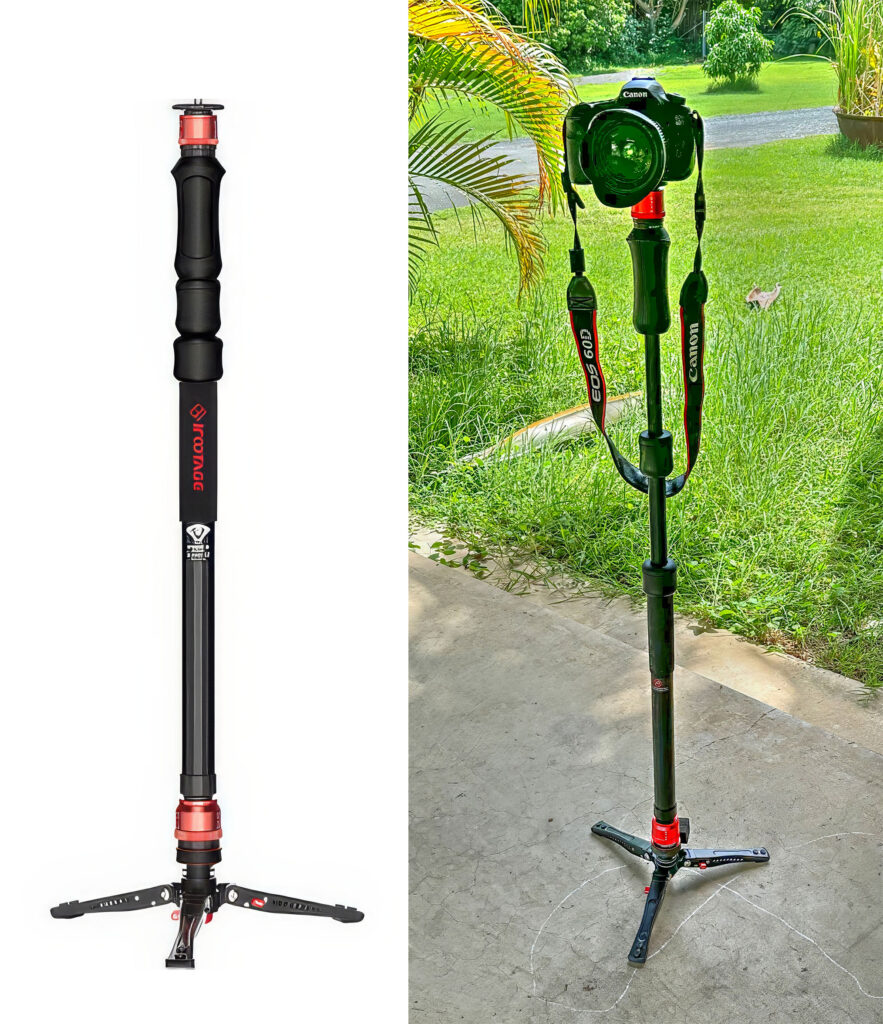
The Manfrotto tripod, while amazingly sturdy, can be quite heavy when hiking trails or up to Hamm’s Bluff Lighthouse. So I added an iFootage Cobra Strike 3 monopod.
The Cobra Strike 3 Monopod offers excellent stability while remaining easy to carry. It features adjustable height that extends smoothly, allowing quick adaptation to various shooting angles and positions, and a sturdy base with rubberized feet for added traction on a variety of surfaces, ensuring steady shots even in challenging conditions, plus the quick release base forms a detachable mini tripod.
All of my DSLRs are equipped with the Manfrotto QR plate, and I have added a Manfrotto tilt head and a Manfrotto ball head mounted to iFootage QR attachments, so the cameras can readily be used with either the Manfrotto tripod or the Cobra Strike 3 Monopod.